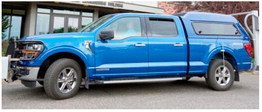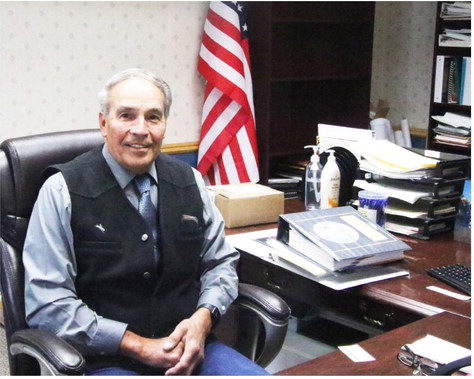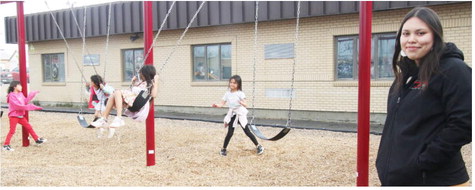Montana’s 3D Truck Could Aid Military


A Montana State University researcher is working to help transportation agencies and the U.S. military scan roadways and runways for potentially dangerous imperfections. Engineers say the technologies at MSU’s Western Transportation Institute pick up results faster and less expensively than methods that have been in place for years.
The technologies are currently being tested on real roadways at highway speeds, mounted to a blue Ford F-150 hybrid pickup truck. On a recent afternoon, the truck was rolling down I-90 eastbound, keeping pace with traffic. A downward-facing laser and a high-speed camera ride in a box affixed to the front bumper, scanning the highway, measuring friction the road offers at any given point with precision down to 0.1 millimeter. Meanwhile, two large sensing boxes on the truck’s tailgate contain cameras and lasers that check the road’s surface for cracks and holes at 0.5 millimeter resolution covering the entire lane width.
“The hardware sensors are based on 3D laser triangulation principles to scan the pavement many thousands of times per second at highway speed to establish a 3D replica of the pavement surface,” said Kelvin Wang, WTI director and professor of civil engineering in MSU’s Norm Asbjornson College of Engineering. “Then AI software generates condition data on pavement cracking and other defects in real time using a high-end GPU card.”
A GPU card, short for Graphics Processing Unit card, is a computer hardware component that handles complex graphics and image processing tasks.
While a driver pilots the tech-laden vehicle, called a “3D Truck,” down the road, a passenger operates the sensors via touchscreen monitor. The system is designed to capture the width of a lane with each pass. Data is collected in real-time, such as the dimensions of a crack in the road, by the bumper-mounted instruments at the rate of a gigabyte per minute, depending upon the vehicle’s speed.
Wang began developing these technologies in the early 1990s when he was a doctoral student working as a highway engineer for the Arizona Department of Transportation. The research work, which was performed in conjunction with researchers at the University of Arkansas from 1995 to 2011, was funded by the U.S. DOT and many other agencies. The U.S. Army acquired a similarly equipped vehicular platform from Wang’s company, WayLink Systems Corp a few years ago. WayLink donated a key portion of the equipment and all software to the WTI 3D project.
Though it is being tested on public roadways, the technology could save lives if deployed by the military, Wang said.
“It is a very dangerous process for the military to use airstrips in a war zone,” Wang said. “The military has an established way to inspect runways, although it’s mostly a manual process. This rapid and automated process would help save lives and provide more accurate and timely data to decision makers in the field.”
The technology is designed for use by infantry without needing to be trained as engineers, Wang said.
“It is straightforward to learn how to operate the data collection in the vehicle,” he said. “Operators can be trained in a matter of hours to efficiently acquire and process the data.”
The video and related data can be monitored remotely in real time, thanks to a vehicular mobile internet connection.
Wang said current technology “sees” and analyzes the roadway surface. However, he is seeking additional funding that might enable him and his team to integrate a system with the capability to determine structural properties of pavement layers underneath.
Wang said the technology may one day be adapted as a dual-use application to meet the needs of transportation agencies and U.S. military for rapid and accurate assessment of pavements on roads and airfields . WTI has recruited several new graduate students and staff researchers to further enhance the technology in the coming years. Wang is jubilant about the opportunity at MSU and hopes to continue his lead on worldwide basis for automated pavement survey by leading his team to develop new sensor and software IPs.
“Under Wang’s leadership, MSU’s Western Transportation Institute is innovating solutions for rapid road assessment with both civilian and military applications,” said Alison Harmon, MSU’s vice president for research and economic development. “Improving road safety aligns with our strategic plan to support the security of Montana and our nation, and supports the purpose of our Institute for National Security Research and Education.”
MSU’s Institute for National Security Research and Education aligns people and programs that have a shared focus on national security efforts.

 ...
...
